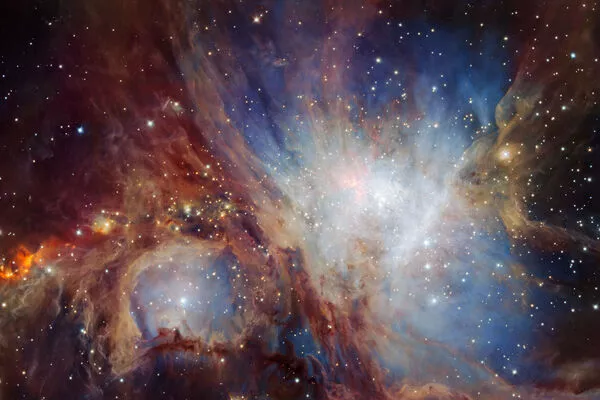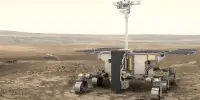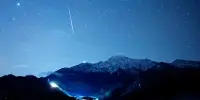The Butterfly Nebula, also known as NGC 6302, got its “wings” as a result of gas and dust being ejected from the dying central star, creating a symmetrical bipolar shape. The intense ultraviolet radiation from the central star also ionized the surrounding material, causing it to glow in bright colors visible in telescopes. This is an example of a planetary nebula, a type of emission nebula formed at the end of a low-mass star’s life.
Something is wrong in the Butterfly Nebula. When astronomers compared two Hubble Space Telescope exposures of this planetary nebula taken in 2009 and 2020, they discovered dramatic differences in the material within its ‘wings.’ Powerful winds appear to be driving complex alterations of material within the Butterfly Nebula, a behavior not previously observed in planetary nebulae. The researchers want to know how such activity can occur in what should be a ‘sputtering, largely dormant star with no remaining fuel.’
Planetary nebulae form when red giant stars expel their outermost layers as they exhaust their helium fuel, resulting in hot, dense white dwarf stars the size of Earth. The carbon-enriched material that was shed forms dazzling patterns as it is gently blown into the interstellar medium.
The majority of planetary nebulae are roughly circular, but a few have an hourglass or wing-like shapes, such as the appropriately named “Butterfly Nebula.” The gravitational pull of a second star orbiting the nebula’s “parent” star caused the material to expand into a pair of nebular lobes, or “wings.” The wings, like an expanding balloon, grow over time without changing their original shape.
The Butterfly Nebula is extreme in terms of the mass, speed, and complexity of its ejections from its central star, which has a temperature more than 200 times that of the sun but is only slightly larger than the Earth.
Bruce Balick
However, new research indicates that something is wrong in the Butterfly Nebula. When astronomers from the University of Washington compared two Hubble Space Telescope exposures of the Butterfly Nebula taken in 2009 and 2020, they discovered dramatic changes in the material within the wings. Powerful winds are driving complex alterations of material within the nebula’s wings, as they will report on Jan. 12 at the 241st meeting of the American Astronomical Society in Seattle. They want to know how such activity is possible from a “sputtering, largely dormant star with no remaining fuel.”
“The Butterfly Nebula is extreme in terms of the mass, speed, and complexity of its ejections from its central star, which has a temperature more than 200 times that of the sun but is only slightly larger than the Earth,” said team leader Bruce Balick, a UW professor emeritus of astronomy. “I’ve spent years comparing Hubble images and I’ve never seen anything quite like it.”
The researchers compared high-quality Hubble images taken 11 years apart to determine the speeds and growth patterns of features within the wings of the nebula. Lars Borchert, a graduate student at Aarhus University in Denmark who participated in this study as a UW undergraduate student, performed the majority of the analysis.

Borchert discovered roughly half a dozen “jets” – beginning about 2,300 years ago and ending 900 years ago – pushing material out in a series of asymmetrical outflows. Material in the outer portions of the nebula is moving rapidly, at about 500 miles per second, while material closer to the hidden central star is expanding much more slowly, at about a tenth of that speed. Paths of the jets cross one another, forming “messy” structures and growth patterns within the wings.
According to Balick, the nebula’s multi-polar and rapidly changing interior structure is difficult to explain using existing models of how planetary nebulae form and evolve. The star in the nebula’s center, which is obscured by dust and debris, could have merged with a companion star or drawn material from a nearby star, resulting in complex magnetic fields and jets.
“At this point, all of these are just hypotheses,” Balick said. “This demonstrates that we do not fully comprehend the range of shaping processes at work when planetary nebulae form. The James Webb Space Telescope will be used to image the nebular center because infrared light from the star can penetrate through the dust.”
Stars like our sun will eventually swell into red giants and form planetary nebulae, expelling carbon and other relatively heavy elements into the interstellar medium to form star systems and planets in the far future. This new study, along with other “time-lapse” analyses of planetary nebulae, can help illustrate not only how the materials for tomorrow’s star systems will take shape, but also how the building blocks of our own oasis were produced and gathered billions of years ago.
“It’s a creation story that happens over and over in our universe,” said Balick. “The shaping processes provide critical insight into the history and impacts of stellar activity.” Other team members are Joel Kastner of the Rochester Institute of Technology and Adam Frank of the University of Rochester.
















